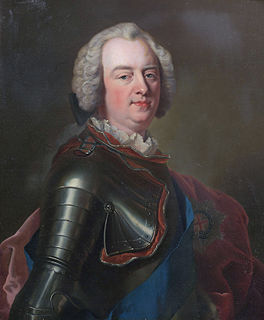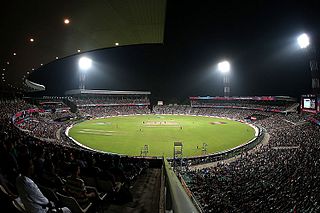Related Research Articles

Marylebone Cricket Club (MCC) is a cricket club founded in 1787 and based since 1814 at Lord's Cricket Ground, which it owns, in St John's Wood, London. The club was formerly the governing body of cricket in England, Scotland and Wales, and still holds considerable global influence.

Lord's Cricket Ground, commonly known as Lord's, is a cricket venue in St John's Wood, London. Named after its founder, Thomas Lord, it is owned by Marylebone Cricket Club (MCC) and is the home of Middlesex County Cricket Club, the England and Wales Cricket Board (ECB), the European Cricket Council (ECC) and, until August 2005, the International Cricket Council (ICC). Lord's is widely referred to as the Home of Cricket and is home to the world's oldest sporting museum.

Middlesex County Cricket Club is one of eighteen first-class county clubs within the domestic cricket structure of England and Wales. It represents the historic county of Middlesex which has effectively been subsumed within the ceremonial county of Greater London. The club was founded in 1864 but teams representing the county have played top-class cricket since the early 18th century and the club has always held first-class status. Middlesex have competed in the County Championship since the official start of the competition in 1890 and have played in every top-level domestic cricket competition in England.

Essex County Cricket Club is one of eighteen first-class county clubs within the domestic cricket structure of England and Wales. It represents the historic county of Essex. Founded in 1876, the club had minor county status until 1894 when it was promoted to first-class status pending its entry into the County Championship in 1895, since then the team has played in every top-level domestic cricket competition in England. Essex play most of their home games at the County Cricket Ground, Chelmsford and some at Lower Castle Park in Colchester. The club has formerly used other venues throughout the county including Valentines Park in Ilford, Leyton Cricket Ground, the Gidea Park Sports Ground in Romford, and Garon Park and Southchurch Park, both in Southend. Its limited overs team is called the Essex Eagles, whose team colours are all-blue.

The earliest definite reference to cricket is dated Monday, 17 January 1597. It is a deposition in the records of a legal case at Guildford, Surrey, regarding the use of a parcel of land in about 1550 in which John Derrick, a coroner, testified that he had played cricket on the land when he was a boy. Derrick's testimony makes clear that the sport was being played by the middle of the 16th century, but its true origin is unknown. All that can be said with a fair degree of certainty is that its beginning was earlier than 1550, probably somewhere in south-east England within the counties of Kent, Sussex and Surrey. Unlike other games with batsmen, bowlers and fielders, such as stoolball and rounders, cricket can only be played on relatively short grass, especially as the ball was delivered along the ground until the 1760s. Forest clearings and land where sheep had grazed would have been suitable places to play.
The years from 1726 to 1763 are the period in which cricket established itself as a leading sport in London and the south-eastern counties of England. In 1726, it was already a thriving sport in the south east and, though limited by the constraints of travel at the time, it was slowly gaining adherents in other parts of England, its growth accelerating with references being found in many counties to 1763. Having been essentially a rural pastime for well over a century before the Restoration in 1660, cricket became a focus for wealthy patrons and gamblers whose interests were to fund its growth throughout the 18th century. Their investment poured money into the game and created the earliest county teams, the first professionals and the first important clubs, all participating in games that have important match status.
The original London Cricket Club was formed by 1722 and was one of the foremost clubs in English cricket over the next four decades, holding important match status. It is closely associated with the Artillery Ground, where it played most of its home matches.

William "Silver Billy" Beldham was an English professional cricketer who played between the 1780s and 1810s. He is generally acknowledged as one of the greatest batsmen of the sport's underarm era. In 1997, he was selected by John Woodcock of The Times as one of his 100 Greatest Cricketers of All Time.

White Conduit Fields in Islington was an early venue for cricket and several major matches are known to have been played there in the 18th century. It was the original home of the White Conduit Club, forerunner of Marylebone Cricket Club (MCC). Later it was used by The Islington Albion Cricket Club, who played their last game at the ground in 1834. Maps from the time show that the cricket field was a few hundred metres north of the White Conduit House, in the land surrounding the modern Richmond Crescent, and paintings suggest it was also possibly on the adjacent field to the south at the modern Barnard Park.
The White Conduit Club (WCC) was a cricket club based on the northern fringes of London that existed between about 1782 until 1788. Although short-lived, it had considerable significance in the history of the game, as its members created Lord's Old Ground, the first cricket venue which would go on to become Lord's, and subsequently reorganised themselves as the new Marylebone Cricket Club (MCC).

David Harris was an English professional cricketer who played first-class cricket from 1782 to 1798.
The Sheffield Cricket Club was founded in the 18th century and soon began to play a key role in the development of cricket in northern England. It was the direct forerunner of Yorkshire County Cricket Club and some of the teams fielded by Sheffield were styled Yorkshire. Sheffield generally held first-class status, depending on the quality of their opponents, from 1827 to 1855.
The 1736 English cricket season was the 40th cricket season since the earliest recorded eleven-aside match was played. Details have survived of 17 top-class matches and two notable single wicket matches.
Kent county cricket teams have been traced back to the 17th century but the county's involvement in cricket goes back much further than that. Kent, jointly with Sussex, is generally accepted as the birthplace of the sport. It is widely believed that cricket was first played by children living on the Weald in Saxon or Norman times. The world's earliest known organised match was held in Kent c.1611 and the county has always been at the forefront of cricket's development through the growth of village cricket in the 17th century to representative matches in the 18th. A Kent team took part in the earliest known inter-county match, which was played on Dartford Brent in 1709. Several famous players and patrons were involved in Kent cricket from then until the creation of the first county club in 1842. Among them were William Bedle, Robert Colchin and the 3rd Duke of Dorset. Kent were generally regarded as the strongest county team in the first half of the 18th century and were always one of the main challengers to the dominance of Hambledon in the second half. County cricket ceased through the Napoleonic War and was resurrected in 1826 when Kent played Sussex. By the 1830s, Kent had again become the strongest county and remained so until mid-century.
Middlesex county cricket teams in England have been traced back to the 18th century, although cricket in the area goes back further.
Essex county cricket teams have been traced back to the 18th century but the county's involvement in cricket goes back much further than that. It is almost certain that cricket reached Essex by the 16th century and that it developed during the 17th century with inter-parish matches being played.

Cricket is a bat-and-ball game played between two teams of eleven players on a field at the centre of which is a 20-metre (22-yard) pitch with a wicket at each end, each comprising two bails balanced on three stumps. The batting side scores runs by striking the ball bowled at the wicket with the bat, while the bowling and fielding side tries to prevent this and dismiss each batter. Means of dismissal include being bowled, when the ball hits the stumps and dislodges the bails, and by the fielding side catching the ball after it is hit by the bat, but before it hits the ground. When ten batters have been dismissed, the innings ends and the teams swap roles. The game is adjudicated by two umpires, aided by a third umpire and match referee in international matches. They communicate with two off-field scorers who record the match's statistical information.
Amateur status had a special meaning in English cricket. The amateur in this context was not merely someone who played cricket in his spare time but a particular type of first-class cricketer who existed officially until 1962, when the distinction between amateurs and professionals was abolished and all first-class players became nominally professional.

The earliest definite mention of cricket is dated Monday, 17 January 1597. The reference is in the records of a legal case at Guildford re the use of a parcel of land c.1550 and John Derrick, a coroner, testified that he had at that time played cricket on the land when he was a boy. Cricket may have been a children's game in the 16th century but, about 1610, the earliest known organised match was played and references from that time indicate adult participation. From then to 1725, less than thirty matches are known to have been organised between recognised teams. Similarly, a limited number of players, teams and venues of the period have been recorded.
The beginning of the 18th century saw sport acquire increasing importance in the lives of people in England and Ireland. Professionalism was by then established in the major gambling sports of bare-knuckle boxing, cricket and horse racing.
References
| This article about a cricket team in England is a stub. You can help Wikipedia by expanding it. |